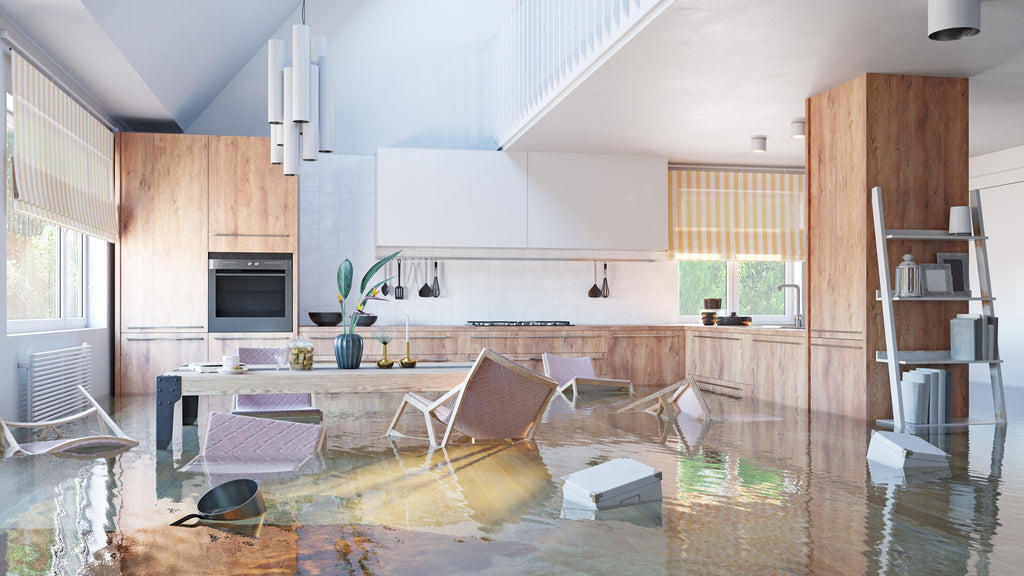
What to Do If Your Home Has Been Flooded?
Floods are devastating natural disasters that can cause significant damage to your home and property. Whether the flooding is due to heavy rains, a burst pipe, or a nearby river overflowing its banks, it is crucial to know what to do when your home has been flooded, for your safety and to aid in a faster recovery process. In this guide, we'll walk you through the steps to take if your home has been flooded, from ensuring your safety to the cleanup and restoration process.
1. Prioritize Safety
It is recommended to follow the below steps to first ensure the safety of yourself and your family.
Evacuate if necessary: If the flooding is severe and poses an immediate threat to your safety, evacuate your home. Follow local authorities' instructions and find a safe place to stay.
Turn off utilities (where safe to do so): Shut off electricity, gas, and water to prevent further damage and reduce the risk of electrical hazards.
Avoid contaminated water: Floodwater can be contaminated with sewage, chemicals, and other hazards. Avoid contact with it as much as possible and wear protective clothing if you need to enter the water.
Watch for hazards: Be cautious of structural damage, debris, and other potential hazards in and around your home.
2. Document the Damages Before Starting any Cleanup or Recovery Processes:
Write down a list of all damages and their approximate value.
If safe to do so, take photos and videos of all damages that will be needed for filing insurance claims.
3. Contact Your Insurance Company
Report the flood and initiate the claims process with your insurance company as soon as possible. Be ready with the documentation you collected in the previous step. It is important you re-read and get an understanding of your policy coverage and ask about any specific steps or forms required for your claim, so you won’t miss any important steps.
4. Start the Cleanup and Restoration Process:
After you've ensured safety and initiated the insurance claims, it's time to start the cleanup and restoration process:
Remove water: Use pumps, wet/dry vacuums, and mops to remove standing water from your home. Ensure proper ventilation to speed up the drying process.
Discard damaged items: Dispose of items that cannot be salvaged. This includes furniture, appliances, and building materials that have been severely damaged by water.
Clean and disinfect: Thoroughly clean and disinfect all affected areas to prevent mold growth and bacterial contamination. Use appropriate cleaning agents and follow safety guidelines.
Dry out your home: Use rated ENERGY STAR certified dehumidifiers to help dry out your home faster and more efficiently. This step is important to prevent mold growth by drying furniture, walls, and other materials in your home faster. Investing in a quality and reliable high-capacity portable room dehumidifier will be worthwhile for this big job. A dehumidifier with auto-pump function can make it more flexible for you to flow the condensed water if you don’t necessarily have a sink to drain in all rooms of your home.
Repair and rebuild: Once your home is dry, assess the structural damage and start the repair and rebuilding process. Work with professionals like a renovation contractor, if necessary.
5. Prevent Future Flood Damage
To help reduce the risk of future flooding and try to avoid potential damage in the future, consider the following preventive measures:
Elevate utilities: Raise electrical panels, HVAC systems, and other utilities above potential flood levels.
Install flood barriers: Consider installing flood barriers or flood-resistant materials in vulnerable areas of your home.
Invest in flood insurance: If you don't already have flood insurance, consider purchasing it to protect your home and belongings.
Maintain drainage systems: Keep your gutters, downspouts, and drainage systems clear of debris to prevent water from pooling around your home.
Dealing with a devastating flooded home can be overwhelming, but taking the right steps in a systematic manner can help you towards recovery and rebuild. Prioritize safety, document the damage, contact your insurance company, and follow the cleanup and restoration process with an air dehumidifier to get your life back on track. Additionally, take preventive measures to reduce the risk of future flooding. Remember that you don't have to go through this challenging experience alone—seek help from professionals and support from your community as you work towards recovery.

